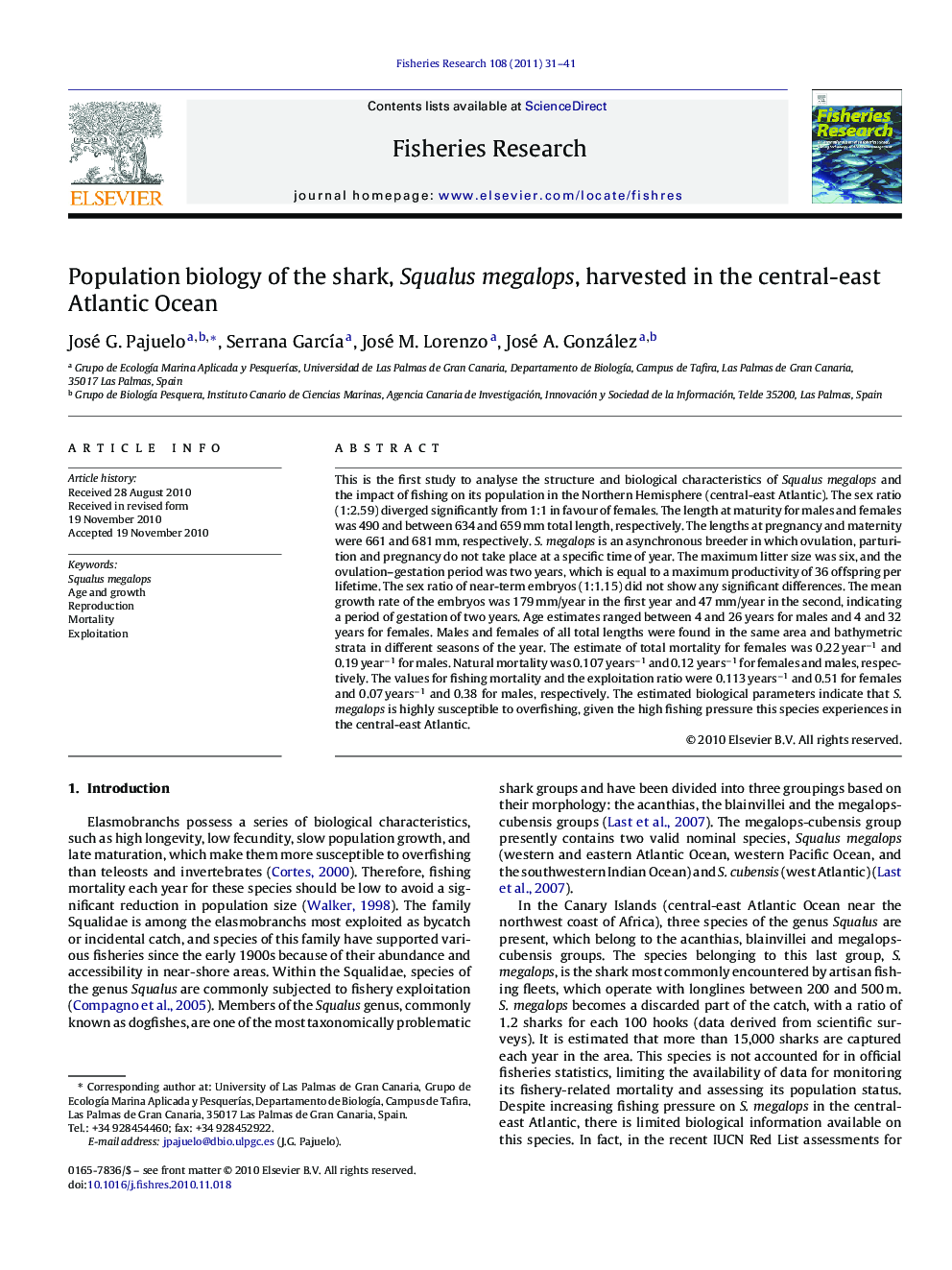| Article ID | Journal | Published Year | Pages | File Type |
|---|---|---|---|---|
| 4543712 | Fisheries Research | 2011 | 11 Pages |
This is the first study to analyse the structure and biological characteristics of Squalus megalops and the impact of fishing on its population in the Northern Hemisphere (central-east Atlantic). The sex ratio (1:2.59) diverged significantly from 1:1 in favour of females. The length at maturity for males and females was 490 and between 634 and 659 mm total length, respectively. The lengths at pregnancy and maternity were 661 and 681 mm, respectively. S. megalops is an asynchronous breeder in which ovulation, parturition and pregnancy do not take place at a specific time of year. The maximum litter size was six, and the ovulation–gestation period was two years, which is equal to a maximum productivity of 36 offspring per lifetime. The sex ratio of near-term embryos (1:1.15) did not show any significant differences. The mean growth rate of the embryos was 179 mm/year in the first year and 47 mm/year in the second, indicating a period of gestation of two years. Age estimates ranged between 4 and 26 years for males and 4 and 32 years for females. Males and females of all total lengths were found in the same area and bathymetric strata in different seasons of the year. The estimate of total mortality for females was 0.22 year−1 and 0.19 year−1 for males. Natural mortality was 0.107 years−1 and 0.12 years−1 for females and males, respectively. The values for fishing mortality and the exploitation ratio were 0.113 years−1 and 0.51 for females and 0.07 years−1 and 0.38 for males, respectively. The estimated biological parameters indicate that S. megalops is highly susceptible to overfishing, given the high fishing pressure this species experiences in the central-east Atlantic.
